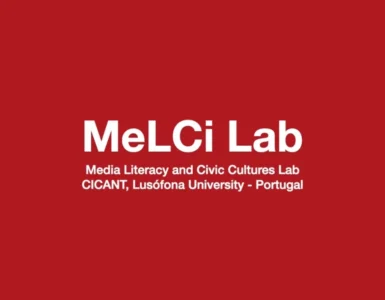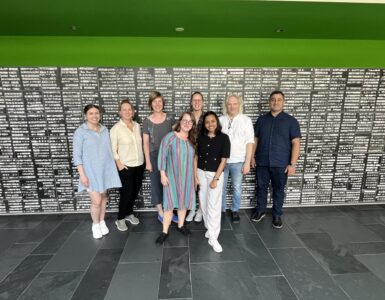by Brad Mitchell, Liz du Plessis and Manon Allard-Kropp, Missouri Online, USA.
The Design Services team within Missouri Online provides flexible faculty development opportunities to University of Missouri System instructors. The Sprints micro-credential program offers self-paced mini-courses in which learners earn badges in four areas of online teaching and learning: design, assessment, community, and inclusion. In the area of inclusion, the mini-course Sprint 4.B: Open Educational Resources (OER) and Open Pedagogy supports the integration of OER into online courses. The course aligns with UNESCO’s Sustainable Development Goal of ensuring “inclusive and equitable quality education” and its vision of a “world with equitable and universal access to quality education.” The course also supports the mission of the University of Missouri System, as a land-grant university and Missouri’s only public research institution, to achieve excellence in discovering, disseminating, preserving, and applying knowledge.
You can find the mini-course on Canvas Commons using the keywords “Introduction to Open Educational Resources for Instructors”. The course is licensed under a Creative Commons BY-NC-SA 4.0 Deed license, and can be re-used or adapted to fit your needs.
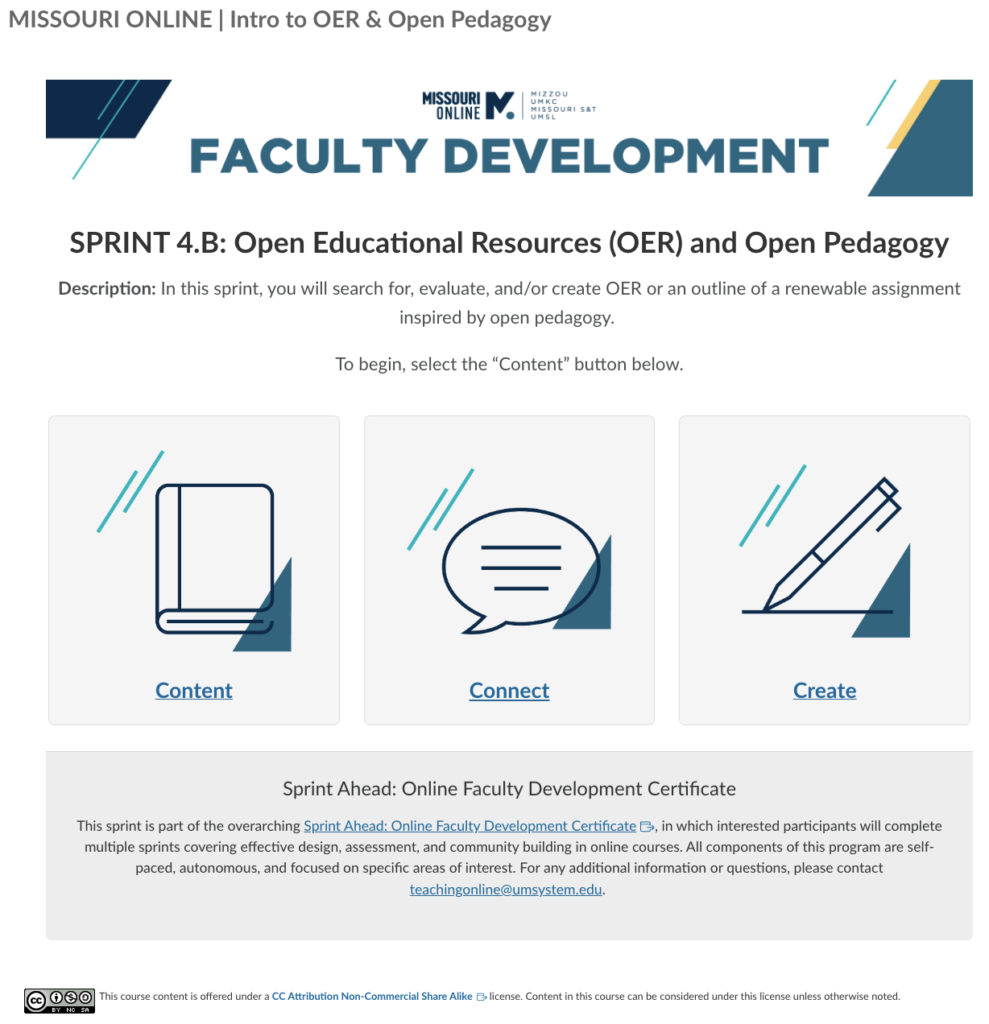
Overview
Sprint 4.B: Open Educational Resources (OER) and Open Pedagogy provides a short, self-paced learning opportunity for our faculty to develop the skills to find, evaluate, and create or adapt OER materials, enhancing both teaching effectiveness and student learning experiences. The primary objectives of OER and open pedagogy are to reduce the costs of educational materials, promote inclusive and customized learning content, and foster active learning through open pedagogy. This course empowers instructors with the knowledge and tools to develop and share engaging and relevant course materials while students benefit from improved access to diverse and adaptable resources.
Missouri Online’s OER course is known for its adaptability, originality, and effective use of resources to enhance learning. By integrating tools such as Pressbooks and H5P into our course, we can offer a flexible and personalized learning journey.
Unique learning tracks
One innovation of our course lies in its design, which caters to diverse learning needs through four distinct learning tracks. The course starts with an introductory exploration of OER repositories, moves through an intermediate evaluation of selected OER, and proceeds to more advanced topics that engage with university-supported tools such as Pressbooks and H5P for creating interactive OER content. The course concludes by introducing learners to the principles of open pedagogy and renewable assignments. Participants then select a final assignment track that fits their teaching goals and interests.
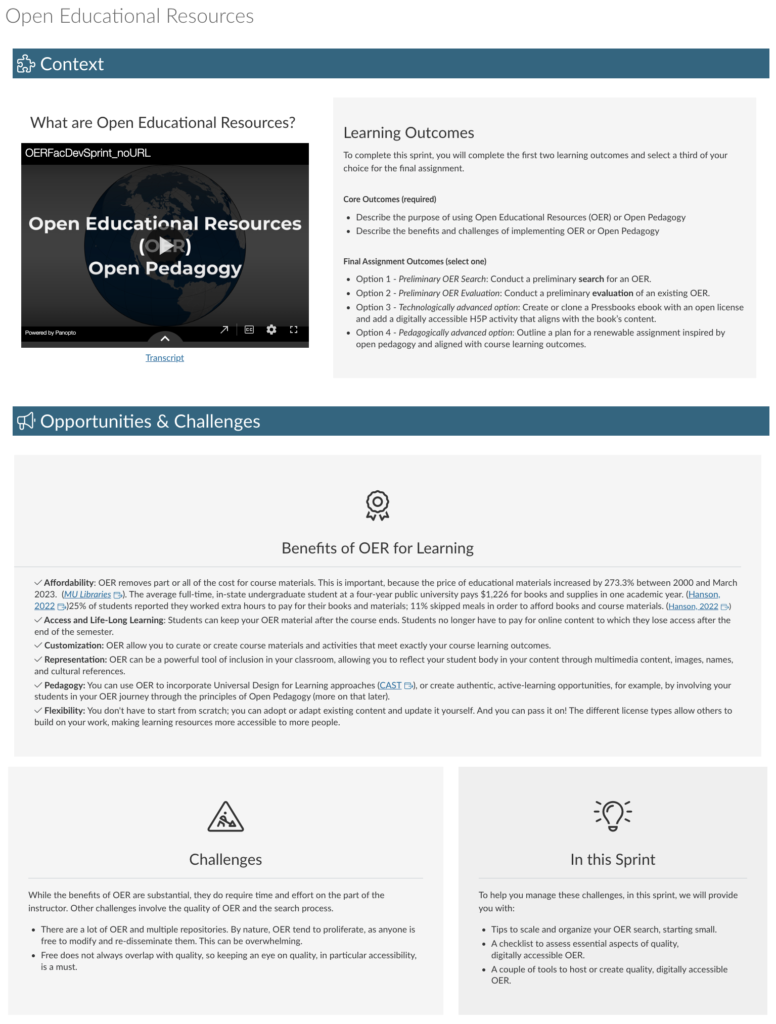
This step-by-step and personalizable approach ensures a comprehensive learning experience that enhances understanding and application of OER principles and technologies. It allows participants to engage deeply with the material, culminating in the learner creating and sharing a final creative project tailored to their individual context. In line with the Universal Design for Learning framework, these learning tracks are carefully crafted to accommodate varying proficiency levels and interest in OER, open pedagogy, and technology, ensuring that each participant can navigate through the content in a way that best suits their learning goals. This structure not only supports flexible learning but also encourages the active participation of learners in the course and direct application to their students’ teaching goals.
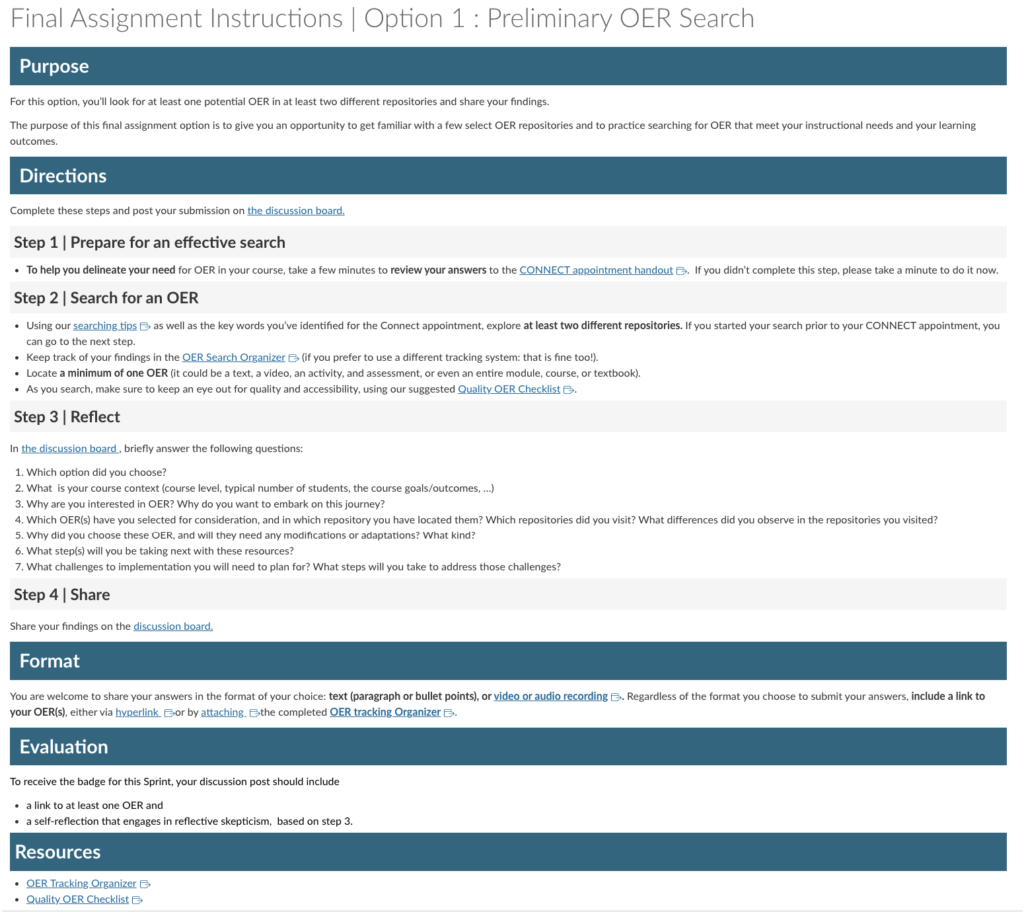
Interactivity
A particularly innovative feature of our program is using an H5P branching scenario through Pressbooks to guide learners in selecting the most appropriate track for their needs, complemented by an accessible transcript. This approach exemplifies our commitment to making learning accessible and engaging for all participants, regardless of their background in multimedia production or technological proficiency.
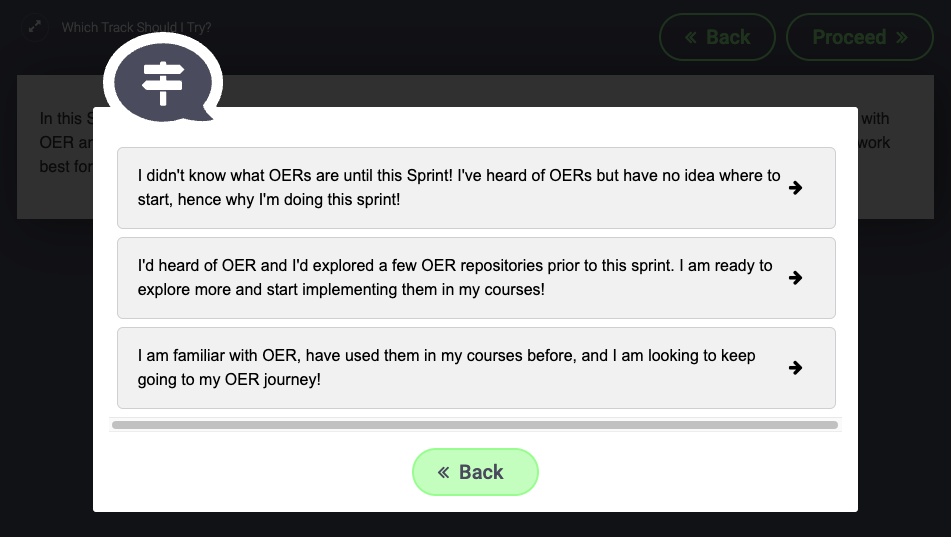
Conclusion
Our multidisciplinary approach, which combines elements of technology, pedagogy, and content creation, showcases originality in design and an effective use of limited resources to engage faculty who may not have professional training in media production. Sprint 4.B: Open Educational Resources (OER) and Open Pedagogy offers a dynamic platform that empowers participants to actively create OER and share their knowledge with the broader campus community. This initiative represents a noteworthy and valuable contribution to educational media, as it promotes open collaboration and cultivates a culture of shared learning.
Additional resources:
- Open Educational Resources (OER) & Open Pedagogy: https://www.youtube.com/watch?v=DvxLZA9hNVE
- Printable and editable Quality OER Checklist
- OER Search Organizer
Authors:

Manon Allard-Kropp, Missouri Online, USA
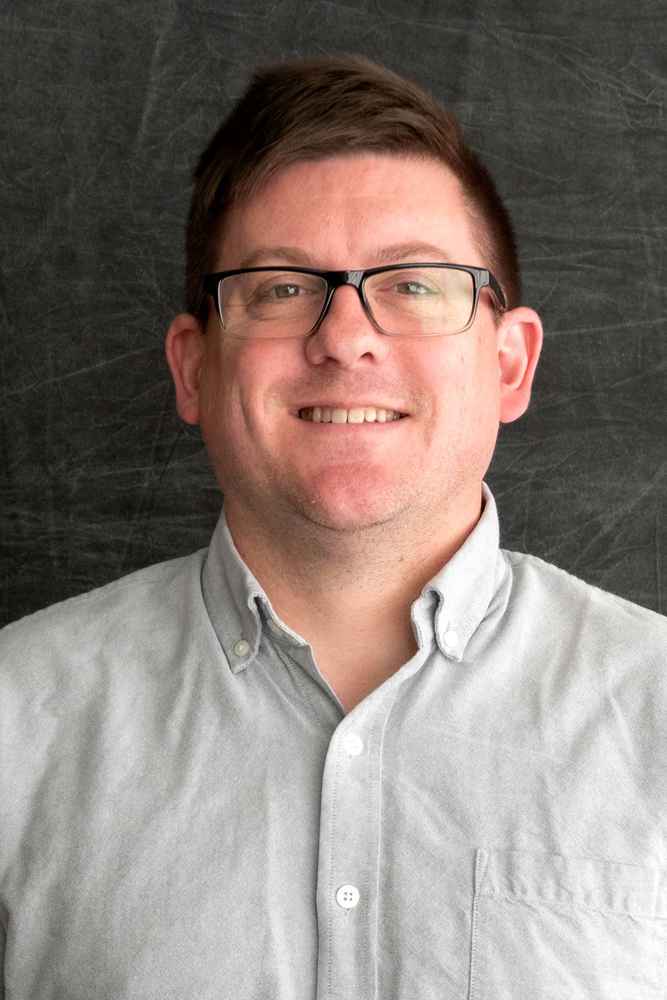
Brad Mitchell, Missouri Online, USA
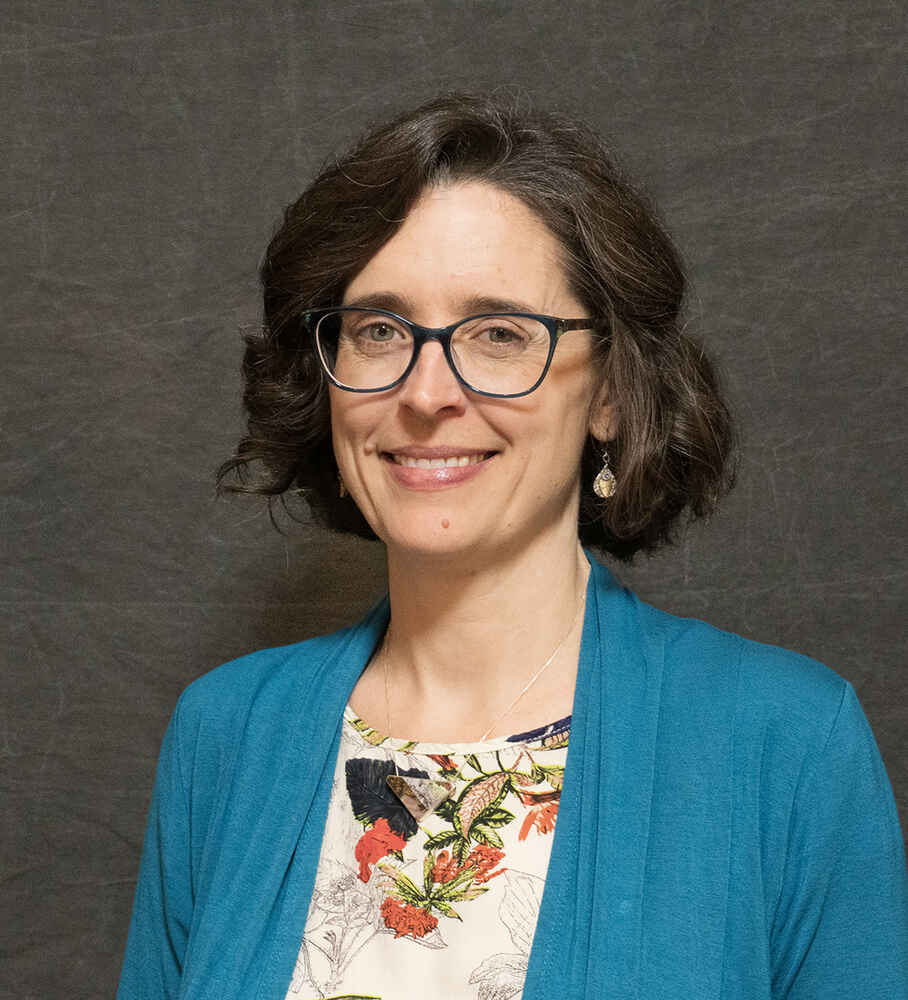
Liz du Plessis, Missouri Online, USA



